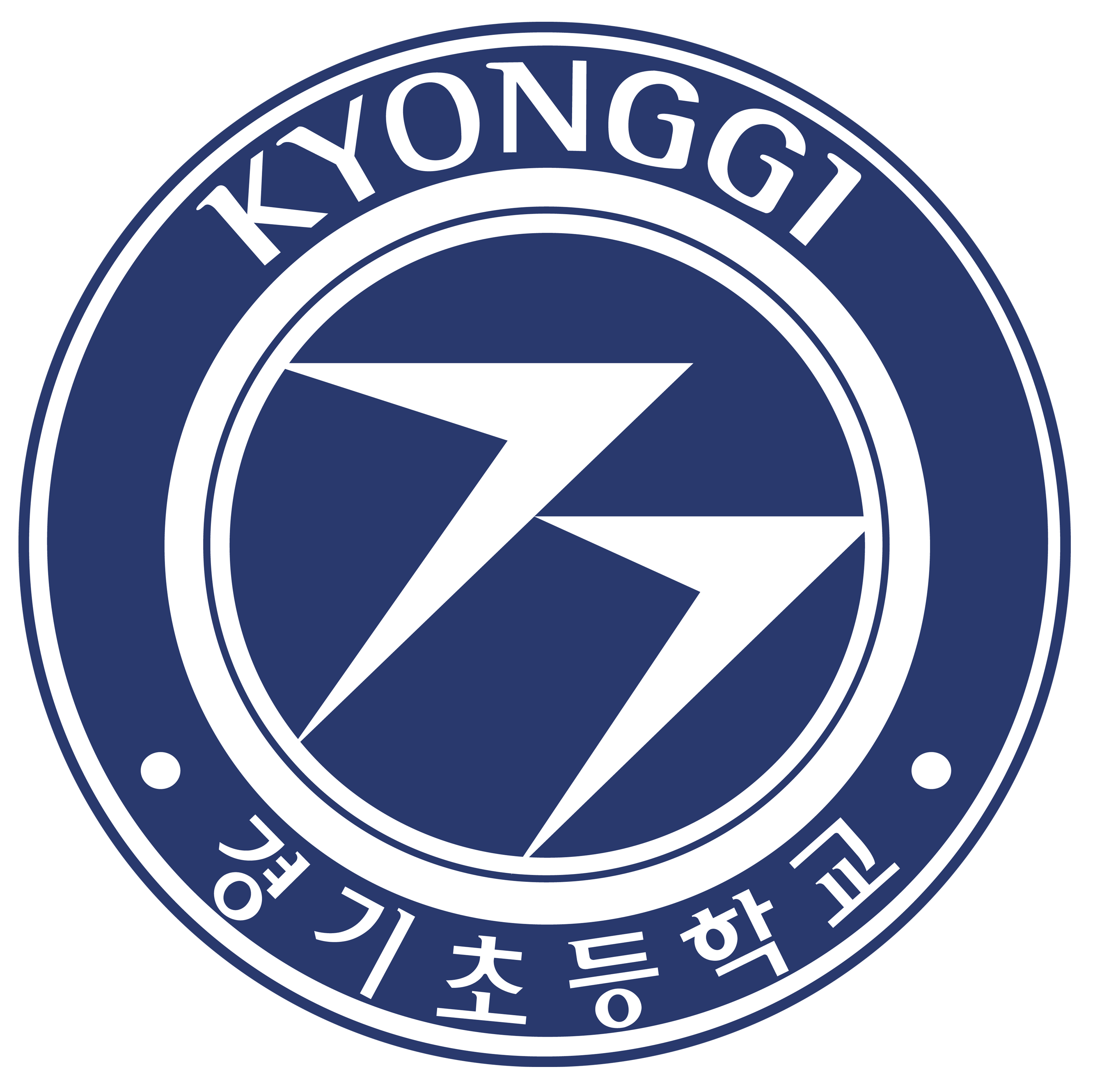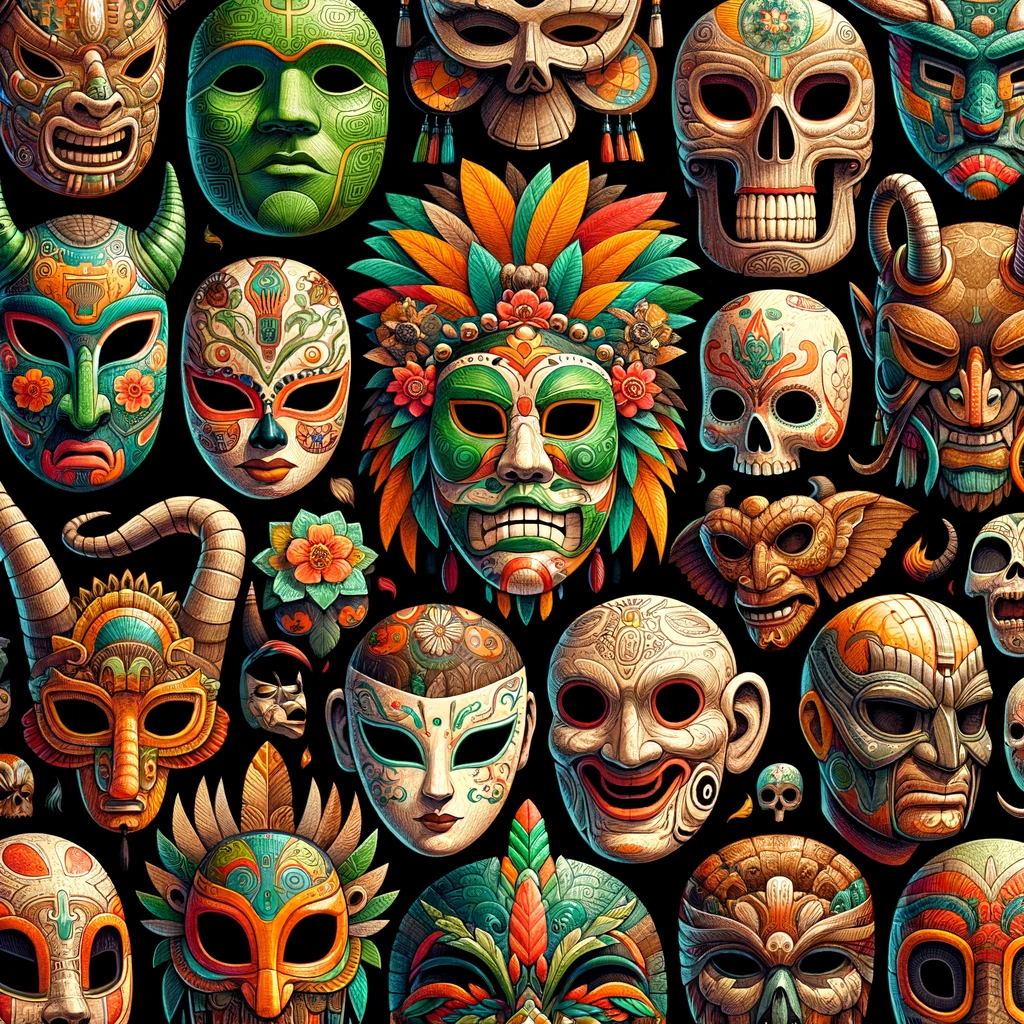Marvelous Mayan Masks
Kim NaYeon (Julia)
Masks, for diverse uses such as events, battles, and to remember the dead, were used for a long time starting from the ancient times. Since masks are used for a lot of purposes and have different shapes, there are traditional masks with various features all around the world. Here, an introduction to the unique and colorful Mayan mask.
Mayan masks are especially worn for 3 purposes- to adorn the dead, to be worn at important events, and to be worn in battles. First, a mask which has the purpose to adorn death has a comparatively calm design. The mask is green and is made from a shiny material. Also, it is made in the shape of the dead’s face.
Secondly, masks which are to be worn at important events are comparatively vibrant and are colorful with various designs. It often has a person’s face or a shape of an animal, to represent animals that are regarded as Mayan spirits. As an example, a mask with a shape of a jaguar’s face is thought to be associated with strong and powerful kings. In addition, masks worn at important events were very intricately made, these masks would be very sophisticated and complicated!
Finally, masks are also worn to fight in a battle. Since masks are often made out of a variety of materials such as wood or volcanic rock, masks could play a role in a battle to protect the soldiers’ faces. Mayan people also wore masks to intimidate their enemies with their fabulous designs!
Pretty Skeleton Mask : Calacas
Hong JaeYoon (Jaeyoon)
If you’ve watched the movie “Coco”, you’ll know that it’s set in the background of the Mexican festival “Day of the Dead”. You may have seen skull masks called “Calaca”. Mexicans believed that the dead descend into the world once a year to see their families. Because of this, Mexicans wore masks on “Day of the Dead’. Another reason Mexicans wear Calaca is to celebrate and remember loved ones who have died. I love this mask, because it seems to contain Mexicans’ belief not to forget about the past but to celebrate it. I also fell in love with Calacas because it seems to connect the living and the dead with each other.
Like Mexico, South Korea also has unique masks, called “Hahoetal”. Calacas and Hahoetal are clearly different. The Calaca is to remember the dead while the Hahoetal is a mask used in ceremonies dating back to the 12th century. But they are similar in that they contain the culture of their countries.
I’m sure you’re curious about the way Calacas looks. As I said before, it resembles a skeleton. Actually, Calacas is not scary or creepy but it is a really pretty skeleton mask because there are some flower paintings on it.
The Traditional Korean mask, Hahoetal, has a long history. So, I was also curious about the history of Calacas. I think Calacas has a long history like Hahoetal. Calacas originated in Mayan traditions that survived the Spanish conquest. I was really impressed that my favorite mask has such a rich history.
Krampus – Cool or Crazy?
Rho AhYoon,(Elena)
Have you ever thought about being or acting like someone else? We disguise ourselves for all kinds of reasons, to have fun on Halloween or to act out on the stage. We can wear costumes, wigs, or other things. Among these, the mask is most effective in making someone look different. We recognize someone best by looking at their face. For this reason, many cultures have made a variety of masks. The Austrian Krampus is a kind of mask that interests me for its terrifying appearance.
In folklore, the Krampus is described as being half goat and half demon with pointy horns. During the Christmas season, Krampus punishes children who are naughty. This is the opposite of Santa Clause who rewards the good children with gifts. On the evening of 5 December, the day before St. Nicholas Day, men dress up to look like the hideous Krampus and go out into the streets to scare children. For even more fun, people participate in Krampus, which is the annual Krampus .
This mask is more horrifying than any masks seen in Korean culture. Although most Korean masks were also used to drive away evil, the majority of the Korean masks have funny expressions whether they are sad or happy. Maybe, Koreans tried to find humor in their lives while the people of the Alpine mountains focused on living as good people.
New Year’s Cheers, China
Park ChaeMin (Chaem)
Have you ever been to China? China is kind of a weird country, it still has some cool and amazing features. Did you know that Chinese people love the number 8 and the color red? Also, in Chinese history, there was a king who wanted to burn all of the books in the country! Wasn’t he crazy??!!! Because China has a crazy and cool history, I’d like to introduce one of China’s very cool things, the Chinese New Year masks.
Chinese New Year masks symbolize good fortune and cultural heritage. They are often made of materials like wood, paper-mache and fabric with red and gold colors, representing happiness and prosperity. They usually resemble dragons.
These masks play a crucial role in dragon and lion dances, traditional performances which are believed to bring luck and ward off evil spirits. They are also worn in various festivities and processions throughout the Chinese New Year period. Different regions in China may have their own unique variations of these masks. They vary in design and symbolism, reflecting local traditions and cultural influences.
In conclusion, I think that Chinese masks are very cool because of the significance of Chinese New Year masks such as how it is used, the variations between regions and newly added parts. It’s a bit different with Korean masks because they don’t have newly added parts or have variations. Still, every mask has its own unique creativity, which makes the masks special. But in my opinion, Chinese masks are one of the coolest masks in the world!
Face of a Nation
Yoon JiAn (Emily)
Japanese masks usually look like animals, and usually resemble a Dokkaebi. Korean masks often resemble the Dokkaebi too, but the Japanese mask called Kabuki resembles a human face. They are different from Korean masks. Korean masks are smiling and are usually depicted in shades of brown. In turn, the Kabuki masks are expressionless and are white.
A Kabuki mask is used when dancing. The actors have carried the tradition as Kabuki from one generation to the next. These days, Kabuki masks are still made using the same techniques they did centuries ago, passing on the trade for generations.
Kabuki was made in the 17th century, when a female dancer named Okuni, achieved popularity with parodies of Buddhist prayers. The Kabuki mask is an ancient art that has long existed in Japanese culture. Being an intricate part of Japanese culture, it is considered a symbol of traditional Japanese art and the masks are used in Japanese theater, such as Non and Busaku. In a similar way, Korean Tal is used in Tal-Chum. It is a tradition of Korea since centuries ago. It is still a popular culture in Korea.
There are a lot of famous traditions in Japan. But now, masks are the first thing that comes to mind when thinking of Japanese entertainment culture. Japanese masks are so much fun and interesting things to know!
Korean and Venetian Mask Culture
Shin MinSeo (Rosa)
Today I will compare Korean and Venetian traditional mask culture. First, I’ll talk about why Korean and Venetian people made masks. Long ago, Korean slaves were angry with the noblemen, so they performed a play. The play made fun of a bad, lazy nobleman, but they wore masks because they were afraid they would be killed. This play allowed the slaves to get out their anger. The fun thing is that the nobleman enjoyed it, too! So this play and the masks became a Korean tradition.
Second, I will talk about Venetian masks. Originally, the masks were adorned by members of all socioeconomic classes to conceal their identities. This tradition started in the 13th century. It was necessary since most legal and moral boundaries were blurred during this period, and so were the Venetian republic’s rules regarding upper and lower social classes intermingling.
Next, I will tell you what materials were used to make the masks. Korean masks are made of smooth ingredients such as paper-mache, using Korean mulberry paper called Hanji, or carved from the wood of alder trees. The hair was sometimes wood or string. Venetian masks are made of paper, glue, clay, fabric, porcelain, or pieces of animal skin.
Nowadays, Korean masks are used for performances in folk villages. Sometimes they are used at holidays for celebrations. In Italy, Venetian masks are used in holidays or the carnival festivals. I hope you learned about Korean and Venetian mask cultures and how they are similar and different.

